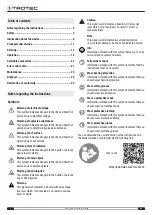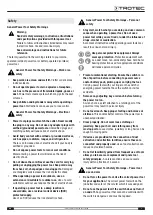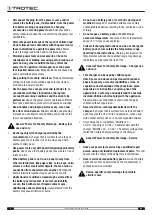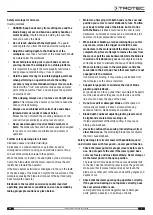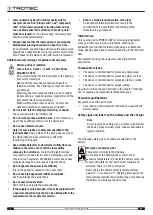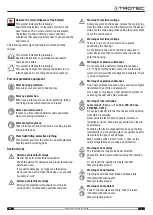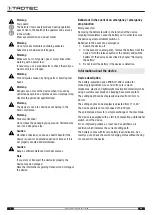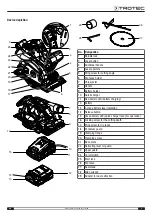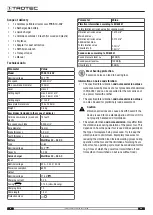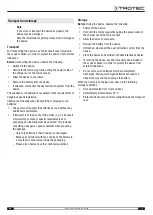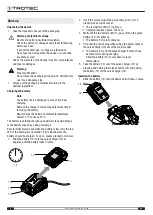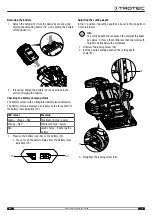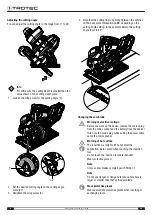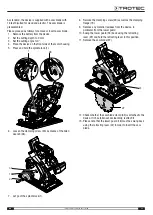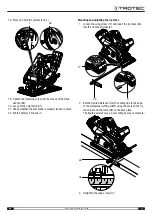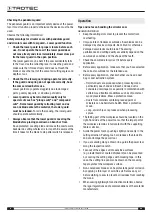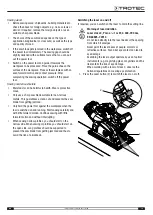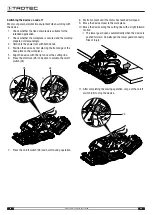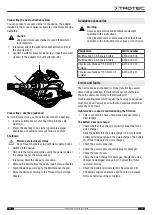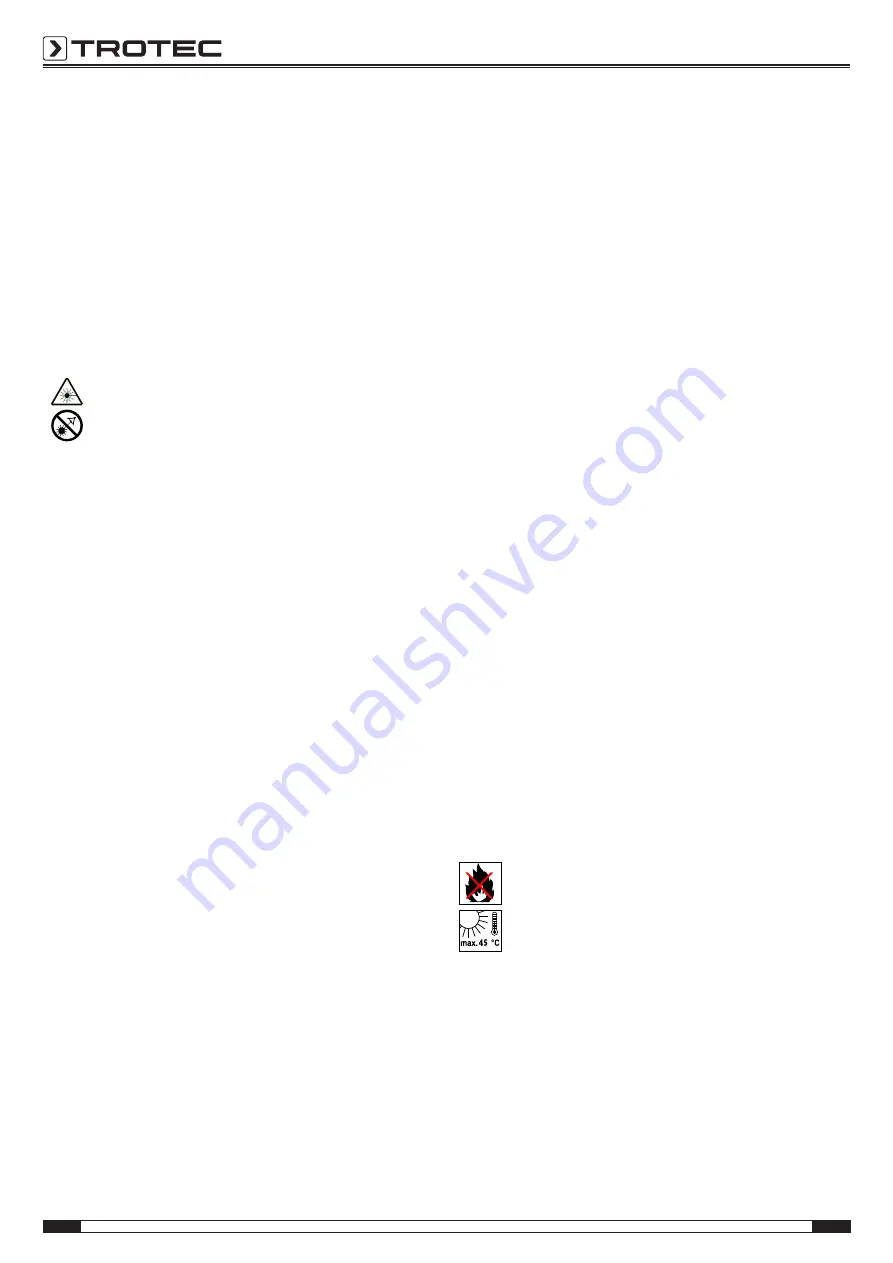
6
EN
cordless portable circular saw PCSS 10-20V
•
Lower guard may be retracted manually only for
special cuts such as "plunge cuts" and "compound
cuts". Raise lower guard by retracting lever and as
soon as blade enters the material, the lower guard
must be released.
For all other sawing, the lower guard
should operate automatically.
•
Always observe that the lower guard is covering the
blade before placing saw down on bench or floor.
An unprotected, coasting blade will cause the saw to walk
backwards, cutting whatever is in its path. Be aware of the
time it takes for the blade to stop after switch is released.
Additional safety warnings for portable circular saws
Warning of laser radiation
Laser class 2, P max.: < 1 mW, λ: 400-700 nm,
EN 60825-1:2014
Do not look directly into the laser beam or the opening
from which it emerges.
Never point the laser beam at people, animals or
reflective surfaces. Even brief eye contact can lead to
eye damage.
Examining the laser output aperture by use of optical
instruments (e.g. magnifying glass, magnifiers and the
like) entails the risk of eye damage.
When working with a laser of class 2, observe the
national regulations on wearing eye protection.
•
Do not reach into the chip ejector with your hands.
They could be injured by rotating parts.
•
Do not work overhead with the saw.
In this manner you
do not have sufficient control over the power tool.
•
Do not use abrasive wheels.
•
Only use saw blades of a diameter specified in the
technical data
Using a blade of the wrong size may leave
the blade without proper protection or affect the
functioning of the guard.
•
Use suitable detectors to determine if utility lines are
hidden in the work area or call the local utility
company for assistance.
Contact with electrical lines
may result in fire and electric shock. Damaging a gas line
may lead to an explosion. Penetrating a water line causes
property damage and may cause an electric shock.
•
Do not operate the power tool stationary.
It is not designed for operation with a saw table.
•
Do not use high speed steel (HSS) saw blades.
Such saw blades can easily break.
•
Do not saw ferrous metals.
Red hot chips can ignite the dust extraction.
•
If the supply cord is damaged, it must be replaced with
a special connection line that can be obtained from the
manufacturer or his customer service.
•
Ensure a steady forward motion of the tool.
An insufficient forward motion may result in the
overheating of the saw teeth or the melting of the
workpiece to be processed.
Intended use
Only use the device
PCSS 10-20V
for producing longitudinal,
cross and mitre cuts in wood, chipboards, plastic and
lightweight construction materials while using a suitable saw
blade, keeping base plate contact and adhering to the technical
data.
We recommend using the power tool with original Trotec
accessories.
Foreseeable misuse
•
The device is not intended for processing damp wood.
•
The device is not intended for processing glass or stone.
•
The device is not intended for processing ferrous metals.
•
The device is not intended for plunge-cutting.
Any other use than the one described in the chapter "Intended
use" is regarded as reasonably foreseeable misuse.
Personnel qualifications
People who use this device must:
•
have read and understood the instructions, especially the
Safety chapter.
Safety signs and labels on the battery and the charger
Note
Do not remove any safety signs, stickers or labels from
the device. Keep all safety signs, stickers and labels in
legible condition.
The following safety signs and labels are attached to the
battery:
Warning of explosion risk!
These symbols indicate the following:
Do not expose the battery pack or tool to fire or
excessive temperature! Do not let the battery come into
contact with water or fire! Avoid direct sunlight and
moisture. There is a risk of explosion!
Never charge the battery at ambient temperatures
below 10 °C or above 40 °C. Charging improperly or at
temperatures outsides the specified range may damage
the battery and increase the risk of fire.


